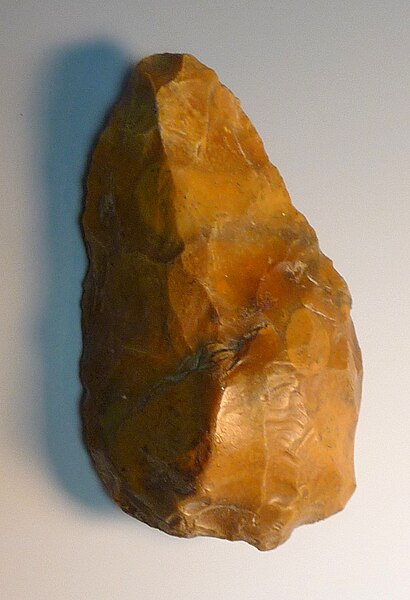A wedge is a triangular shaped tool, a portable inclined plane, and one of the six simple machines. It can be used to separate two objects or portions of an object, lift up an object, or hold an object in place. It functions by converting a force applied to its blunt end into forces perpendicular (normal) to its inclined surfaces. The mechanical advantage of a wedge is given by the ratio of the length of its slope to its width. Although a short wedge with a wide angle may do a job faster, it requires more force than a long wedge with a narrow angle.
Flint hand axe found in Winchester
A tool is an object that can extend an individual's ability to modify features of the surrounding environment or help them accomplish a particular task. Although many animals use simple tools, only human beings, whose use of stone tools dates back hundreds of millennia, have been observed using tools to make other tools.
Carpentry tools recovered from the wreck of a 16th-century sailing ship, the Mary Rose. From the top, a mallet, brace, plane, handle of a T-auger, handle of a gimlet, possible handle of a hammer, and rule.
Prehistoric stone tools over 10,000 years old, found in Les Combarelles cave, France
Bicycle multi-tool
A Bonobo at the San Diego Zoo "fishing" for termites





